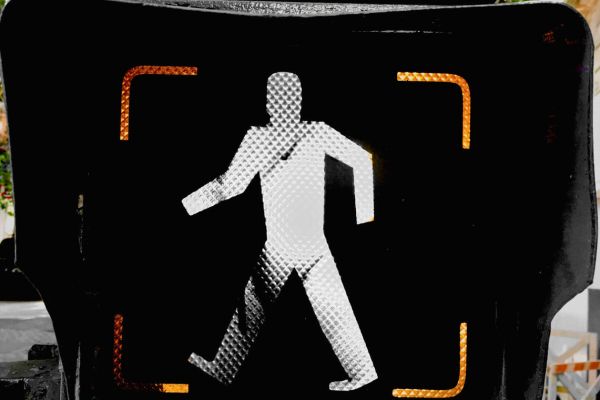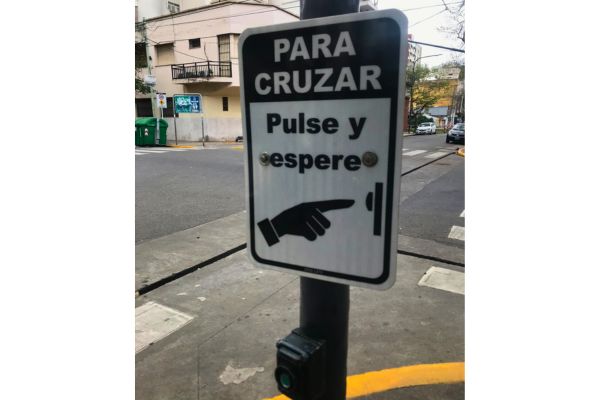Crossing the Streets of Buenos Aires: A Button, A Challenge, and A Survival Guide

Walking through the lively streets of Buenos Aires is an experience like no other. From vibrant street art in Palermo to the unpredictable flow of traffic, the city’s energy never stops. But amidst the hustle and bustle of Buenos Aires streets, crossing the road can be an adventure in itself. In a city where pedestrian crossings don’t always mean safety, encountering a functioning pedestrian button is as rare as meeting a porteño who doesn't have a strong opinion about fútbol.
The Button That Actually Worked!

Imagine my surprise when I stumbled upon a working pedestrian crossing button in Buenos Aires. Unlike the city’s famous street art, which is everywhere, these buttons are elusive. When I pressed it, cars actually stopped, allowing me to cross safely. It felt like discovering a hidden gem among Buenos Aires streets—a small victory in a city that never sleeps.
The Truth About Zebra Crossings

In Buenos Aires, zebra crossings are more of a suggestion than a rule. On these lively streets, drivers don’t always yield just because you’ve stepped onto the crossing. Instead, these markings signal where pedestrians should cross when traffic lights turn red. If there’s no light, crossing requires both caution and confidence, as many drivers turn corners quickly and, more often than not, aren’t inclined to give way.

Honestly, most drivers seem to think they’re channeling Argentine racing legend Juan Manuel Fangio or the latest F1 sensation Franco Colapinto. Add in the sprawling main avenues, like the famous Avenida 9 de Julio—the widest street in the world—and you have the perfect setting for drivers to pick up surprising speeds right in the heart of the city. For more on Avenida 9 de Julio, check out our page here.
Cycle Lanes: Another Thing to Watch Out For

Buenos Aires is also becoming more bike-friendly, with an increasing number of cycle lanes weaving through the city. While great for cyclists, these lanes add another layer of complexity for pedestrians. Always check for oncoming bikes before stepping out—especially on popular streets like Avenida de Mayo, another iconic boulevard linking the historic Plaza de Mayo to the Congress. Learn more about Avenida de Mayo here.
What Makes Buenos Aires Traffic Unique?

The rhythm of Buenos Aires traffic reflects the city’s dynamic culture. Drivers are known for their creative maneuvers, last-second stops, and a certain flair for honking. Long, straight avenues often turn into drag strips, while narrower side streets become arenas of parking improvisation. While this unpredictability adds charm to the bustling streets, it can be a challenge for visitors unfamiliar with local traffic etiquette.
Safety Tips for Pedestrians
Use Traffic Lights When Possible:
They’re your best bet for safe passage.
Watch for Corners:
Drivers may turn unexpectedly, so stay alert.
Follow the Crowd:
When in doubt, cross with locals—they know the unwritten rules.
Be Assertive:
Hesitation can confuse drivers; cross confidently but carefully.
Mind the Bikes:
Look both ways for cyclists in dedicated bike lanes.
Enjoy the View:
If you’re stuck waiting, take a moment to admire Buenos Aires street art or the grandeur of its wide boulevards.
The Pedestrian Button Phenomenon

In Buenos Aires, working pedestrian buttons are so rare they deserve their own story. If you find one, consider yourself lucky! These buttons, like the city’s unique traffic culture, are part of what makes Buenos Aires streets an unforgettable experience.
Conclusion

Crossing streets in Buenos Aires offers more than just a way to get from one place to another—it’s a cultural adventure. From navigating zebra crossings to marveling at a working pedestrian button, each step adds to your story of exploring the vibrant streets of Buenos Aires. So take care, stay alert, and enjoy the ride—after all, this city was made for walking, even if it sometimes feels like an Olympic sport.
To find out more about using public transport in Buenos Aires, including details on buses, subways, trains, taxis, ride-sharing services, and how to obtain and use the SUBE card, visit the Best Way to Get Around Buenos Aires section.
